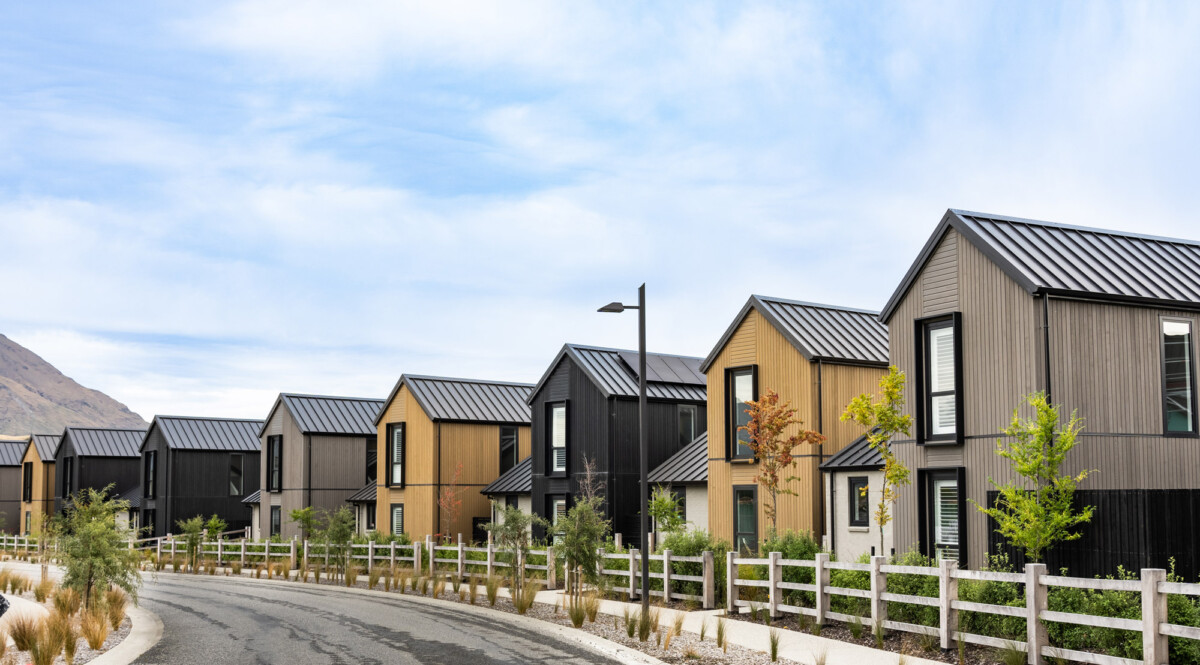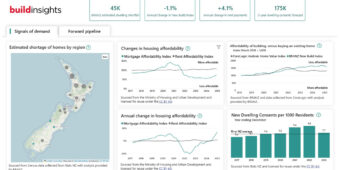NZ produces surplus of homes
30 Sep 2022, Building and housing, News

New Zealand built a surplus of homes in the year to March 2022 and is forecast to go into surplus in the next 12 months
KiwiBank has crunched the numbers and found that high construction activity, combined with Covid restrictions and a large outflow of migrants, culminated in a surplus of 33,000 homes in the year to March 2022.
The report said: “Net migration, the main swing-factor in population growth, posted a sizable 11,500 outflow of long-term migrants from New Zealand’s shores in the year to June 2022. And overall population growth slowed to just 0.2%, the lowest rate since 1986.”
That leaves the overall housing shortage at 23,000 homes – which the bank estimates could be eliminated at some stage over the next 12 months if low population growth and construction rates remain the same.
Record levels of dwelling construction have helped New Zealand close the gap between housing supply and demand. In the year to June 2022, 41,700 private dwellings were constructed – the largest annual increase in Stats NZ estimates since 1991.
At its peak, the mid-2000s construction boom produced a net 30,000 homes.
Not all rosy
However, material and labour shortages are contributing to increased timeframes for many projects. KiwiBank says one way to estimate how many dwellings are built (not just consented to be built) is the net increase in residential electricity connections. Since June 2021, the net increase in dwelling consents has been much lower than the increase in electricity connections, which suggests the pace of building is behind the pace of consenting new builds.
Reserve Bank of New Zealand’s Monetary Policy Statement also noted the discrepancy between the number of consents issued and indicators that homes were completed: “code of compliance signoff numbers are failing to keep up with dwelling estimates (derived from new dwelling consents) too”.
However, the Kiwi Bank report also noted another factor that could make the perceived surplus misleading.
“We believe that another reason for the divergence of dwelling indicators (such as code of compliance signoffs and new electrical connections) and consents is due to the significant infill housing that has been added in our largest cities,” the KiwiBank report added. “Infill housing often requires the demolition of older housing stock and can have a potentially smaller net impact on overall housing stock.”
Low population growth and Covid have reduced housing demand, but with borders re-opened and requirements eased for some visas, net migration is forecast to recover to around 30,000 over the next 24 months.
However, that doesn’t mean that house prices will recover. KiwiBank forecast that house prices will be 13% lower by the end of 2022 and, in 2023, “an expected recovery in house prices is expected to be more muted”.
Register to earn LBP Points Sign in



